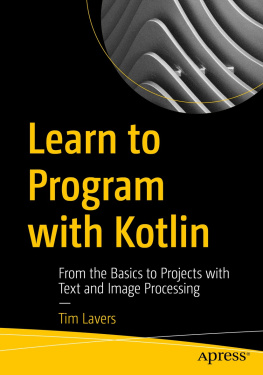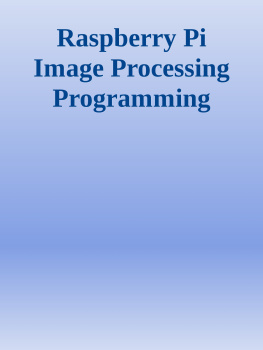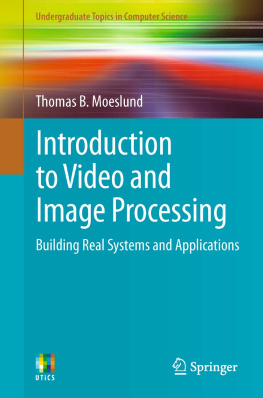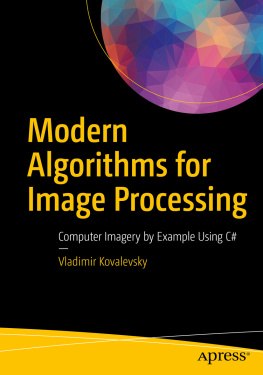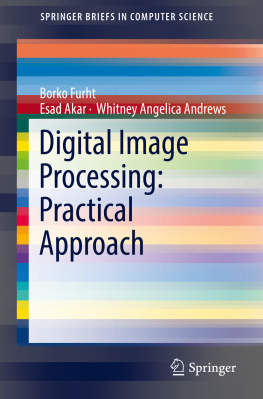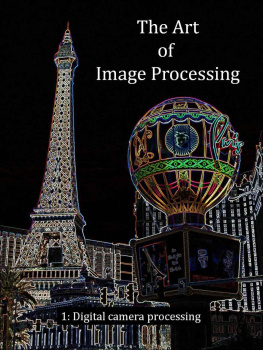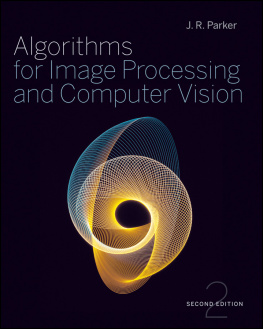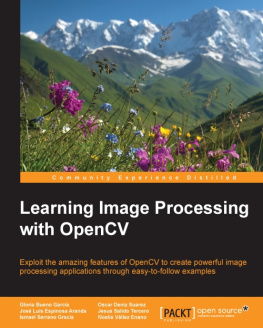Tim Lavers - From the Basics to Projects with Text and Image Processing
Here you can read online Tim Lavers - From the Basics to Projects with Text and Image Processing full text of the book (entire story) in english for free. Download pdf and epub, get meaning, cover and reviews about this ebook. publisher: Apress, genre: Home and family. Description of the work, (preface) as well as reviews are available. Best literature library LitArk.com created for fans of good reading and offers a wide selection of genres:
Romance novel
Science fiction
Adventure
Detective
Science
History
Home and family
Prose
Art
Politics
Computer
Non-fiction
Religion
Business
Children
Humor
Choose a favorite category and find really read worthwhile books. Enjoy immersion in the world of imagination, feel the emotions of the characters or learn something new for yourself, make an fascinating discovery.
- Book:From the Basics to Projects with Text and Image Processing
- Author:
- Publisher:Apress
- Genre:
- Rating:4 / 5
- Favourites:Add to favourites
- Your mark:
- 80
- 1
- 2
- 3
- 4
- 5
From the Basics to Projects with Text and Image Processing: summary, description and annotation
We offer to read an annotation, description, summary or preface (depends on what the author of the book "From the Basics to Projects with Text and Image Processing" wrote himself). If you haven't found the necessary information about the book — write in the comments, we will try to find it.
Tim Lavers: author's other books
Who wrote From the Basics to Projects with Text and Image Processing? Find out the surname, the name of the author of the book and a list of all author's works by series.
From the Basics to Projects with Text and Image Processing — read online for free the complete book (whole text) full work
Below is the text of the book, divided by pages. System saving the place of the last page read, allows you to conveniently read the book "From the Basics to Projects with Text and Image Processing" online for free, without having to search again every time where you left off. Put a bookmark, and you can go to the page where you finished reading at any time.
Font size:
Interval:
Bookmark:


Any source code or other supplementary material referenced by the author in this book is available to readers on GitHub via the books product page, located at www.apress.com/9781484268148. For more detailed information, please visit http://www.apress.com/source-code.
This Apress imprint is published by the registered company APress Media, LLC part of Springer Nature.
The registered company address is: 1 New York Plaza, New York, NY 10004, U.S.A.
This book is for anyone who wants to learn computer programming.
Whether you are an absolute beginner, or you have experience with JavaScript, R, Python, or another programming language, this is your path to developing a clear understanding of important fundamental concepts used by software engineering professionals and gaining the skills to implement those concepts in interesting and realistic projects.
I learned programming in my mid-20s, more than 25 years ago, and have worked as a software engineer since then. My opinion, based on this experience, is that the very best way to learn coding is by doing lots of it.
This book gives you the opportunity to get that essential practice. At the same time, you will be working on fascinating programs such as text analysis, image manipulation, and computer vision. These programs progress in a series of small steps that you, the reader, implement. Each step is a simple change to a working program, so that you are never outside your comfort zone and learning becomes a pleasure. Fully worked solutions are provided for each step.
The book is organized into four parts, as follows: In Part I, you will set up the tools needed, get a first program running, and then learn just enough syntax that you can start working on the projects. Part II concentrates on software for text analysis and word games. This introduces the concepts of Object-Oriented Programming and Unit Testing, which are two cornerstones of modern software engineering. Part III is about image processing and concludes with a CGI (computer-generated imagery) program. By doing this project, you will learn Functional Programming, which is an extremely important feature of modern computer languages. Finally, in Part IV, you will consolidate your skills by developing a computer vision system that reads speed signs.
Throughout the book, you will use the same language and tools that are used by professional software engineers worldwide. The language, Kotlin, is very modern and has a simpler syntax than almost any other language used today. Not only is Kotlin a beautiful and powerful language, but it is employed in a wide variety of situations, from hugely complex business software to web programming, to data science, to Android apps. The skills that you learn here will be applicable in any of these areas.
Kotlin programs are written with an editor that highlights errors and offers genuinely useful corrections in most cases. By using professional-grade tools, you should feel the excitement of knowing that the programs that you are working on are of industry standard. If you get stuck, the large and active community of Kotlin users can help you out.
When you finish the projects in this book and move on to your own programs, you will have all the skills required for success and will have a working knowledge of one of the best programming languages that I have used in my 25 years of professional software engineering. Happy coding!
January 2021
Tim Lavers

is a software developer by trade; at the moment, hes Chief Technology Officer and Data Protection Officer of RenditionDigital International, a software development company based out of Dublin. He wore many hats in his 20+ years in software development, for example, team lead, project manager, architect, and director for development. He also spent time as a trainer for IBM Advanced Career Education, Ateneo ITI, and Asia Pacific College. He has written Learn Android Studio 4 (2020) and Beginning Android Games Development (2020) for Apress.
In Part I, we set up Kotlin and learn the most important features of the language.
In this chapter, we set up our programming environment and get our first program running.
A computer program is a set of instructions that tell a computer to perform an action such as showing an image or printing out some text.
Font size:
Interval:
Bookmark:
Similar books «From the Basics to Projects with Text and Image Processing»
Look at similar books to From the Basics to Projects with Text and Image Processing. We have selected literature similar in name and meaning in the hope of providing readers with more options to find new, interesting, not yet read works.
Discussion, reviews of the book From the Basics to Projects with Text and Image Processing and just readers' own opinions. Leave your comments, write what you think about the work, its meaning or the main characters. Specify what exactly you liked and what you didn't like, and why you think so.

